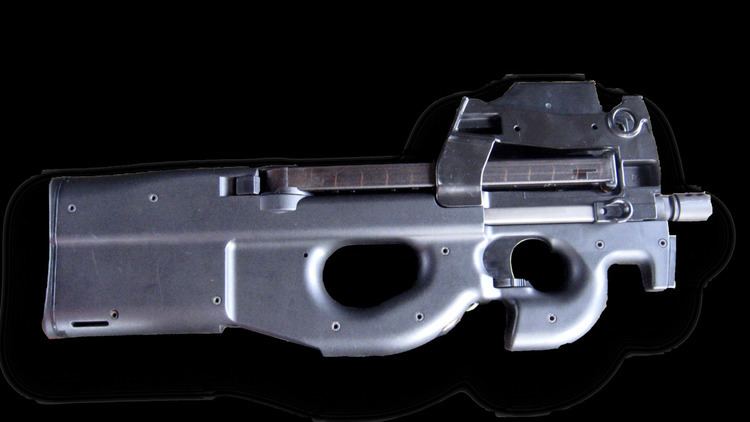Type Semi-automatic pistol Weight 0.85 kg Barrel length | Place of origin Germany Length 200 mm Width 30 mm | |
 | ||
The Heckler & Koch Universal Combat Pistol (HK UCP), a double action, semi-automatic handgun also known as the HK P46, was developed under commission for the German Bundeswehr.
The concept for the UCP was later discontinued at the prototype stage.
History and description
The UCP was to be the companion side arm to the HK MP7 submachine gun, using the same HK 4.6×30mm bottlenecked cartridge (see internal ballistics). The 4.6×30mm round is a direct competitor to the 5.7×28mm by Fabrique Nationale de Herstal (FN). As such, the UCP would have been a direct competitor to the FN Five-seven pistol. Both have greater armor-piercing capabilities and less recoil compared to other commonly used military handgun cartridges, such as the 9×19mm Parabellum or .45 ACP.
The UCP operated on the delayed-blowback operating principle. The external design of the UCP appears to have been borrowed from the HK P2000 pistol, and includes ambidextrous controls, interchangeable backstraps, and a MIL-STD-1913 Picatinny-type rail system for the attachment of accessories. Like the USP and P2000 series of pistols, the trigger mechanism is reported to have been modular and capable of different configurations. The UCP was designed to accept an extended, threaded barrel capable of accepting the attachment of a sound suppressor made by Brügger & Thomet.
The design remained in the prototype phase as of 2006, and had been reported as entering limited trials with the Bundeswehr.
In July 2009, HK USA's president, Wayne Weber, indicated that the UCP project has been cancelled because "HK felt it did not provide adequate ballistics in handgun form."
